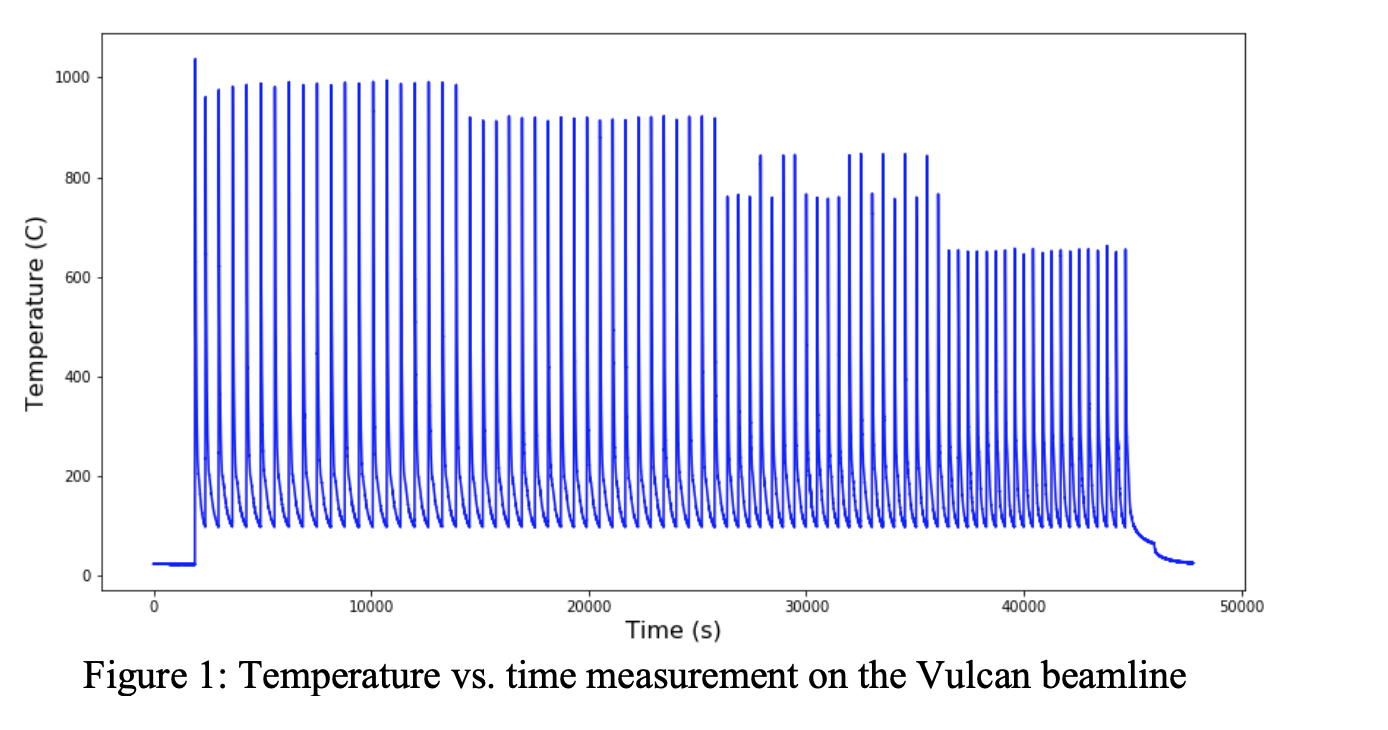

Garrett E. Granroth, Peter F. Peterson, Wenduo Zhou
Spectroscopy Group, Neutron Scattering Division
Oak Ridge National Laboratory
Introduction
Neutron scattering allows scientists to count scattered neutrons, measure their energies and the angles at which they scatter, and map their final positions. This information can reveal the molecular and magnetic structure and behavior of materials, such as high temperature superconductors, polymers, metals, and biological samples. The Spallation Neutron Source (SNS) facility at the Oak Ridge National Laboratory provides the most intense pulsed neutron beams in the world for scientific research and industrial development.
Experiment
The VULCAN diffractometer[1] is designed to understand the fundamental aspects of material behaviors during synthesis, processing, and service. One of the experiments conducted at SNS is designed to generate high intensity neutron pulses for the study of materials, where, over the course of the measurement, the temperature is varied as a function of time [1]. The overall purpose of the neutron measurement is to understand the changes in structure of the material as a function of temperature.
The experiment is conducted as follows: the sample is rapidly heated, then the heat source is turned off allowing the sample to relax and reach an equilibrium. Then the sample is rapidly heated again and the experiment is repeated several times. The goal is to associate neutron events occurring within a certain temperature bin. An event can be defined as follows: the event starts when the sample is subjected to rapid heating and it ends right before the next rapid heating occurs. This is called a heat cycle.
[1] https://neutrons.ornl.gov/vulcan
Dataset
The VULCAN Beamline dataset [3] provides the sample measurement, where temperatures is recorded in two physically different places on the sample. These are held in two different hdf5 groups in the data file. Figure 1 depicts Temperature (in Celsius) vs. time (in seconds), a sample measurement on the VULCAN [2] beamline.

Questions of Interest
Notes to participants
Our preference is for the algorithms to be implemented in Python with the use of Numpy or other widely available libraries, although other libraries are welcome.
References:
[1] Granroth, G.E., An, K., Smith, H.L., Whitfield, P., Neuefeind, J.C., Lee, J., Zhou, W., Sedov, V.N., Peterson, P.F., Parizzi, A., and Skorpenske, H., 2018. Event-based processing of neutron scattering data at the Spallation Neutron Source. Journal of Applied Crystallography, 51(3).
[2] Wang, X.L., Holden, T., Stoica, A.D., An, K., Skorpenske, H.D., Jones, A.B., Rennich, G.Q., and Iverson, E.B., 2010. First results from the VULCAN diffractometer at the SNS. In Materials Science Forum (vol. 652, pp. 105–110). Trans Tech Publications.
[3] Niyanth. S, Noyan I.C., Seren, M.H., and An, K., Vulcan Beamline dataset. Partly supported by the US Department of Energy (DOE) Office of Energy Efficiency and Renewable Energy, Advanced Manufacturing Office program. This research used resources at the SNS, a DOE Office of Science User Facility operated by Oak Ridge National Laboratory.